Subscribe our newsletter
Please Subscribe our news letter and get update.
[newsletter]

Low-grade serous carcinoma (LGSC) of the ovary is a rare and distinct subtype of epithelial ovarian carcinoma, characterized by unique clinical behavior and molecular features. Unlike high-grade serous carcinoma, LGSC presents at a younger age, exhibits a less aggressive course, and is associated with extended survival. This tumor can arise de novo or follow a serous borderline tumor (SBT), emphasizing the importance of accurate pathological differentiation.
The mainstay of LGSC treatment is surgery, with meticulous efforts to achieve microscopic residual disease in metastatic cases. While LGSC is relatively chemo-resistant, adjuvant platinum-based chemotherapy remains the standard of care. Promisingly, hormonal maintenance therapy after adjuvant chemotherapy has shown improved outcomes.
For recurrent disease, treatment options include secondary cytoreductive surgery, chemotherapy, hormonal therapy, targeted therapy, and clinical trials. Advancements in genomic studies and targeted therapies are expected to revolutionize the treatment landscape for LGSC.
Patients with localized disease should undergo comprehensive surgical staging, while fertility-sparing surgery may be considered in select cases. Stage-specific management strategies, including observation, chemotherapy, or endocrine therapy, are recommended.
The discovery of activating mutations in genes involved in the MAPK pathway has opened doors for targeted therapies, particularly MEK inhibitors and CDK inhibitors. Ongoing research on LGSOC genomics and clinical trials exploring combinations of targeted agents hold promise for improving the prognosis of this rare malignancy.
Patients with low-grade serous ovarian carcinoma historically have demonstrated a benefit with hormonal maintenance therapy following cytoreductive surgery and platinum-based chemotherapy.
Primary surgery is the cornerstone of treatment of LGSOC. Patients with disease apparently confined to the gonad(s) should undergo bilateral salpingo-oophorectomy, total hysterectomy and comprehensive peritoneal and retroperitoneal staging, although fertility-sparing surgery including unilateral salpingo-oophorectomy, surgical staging and endometrial biopsy could be taken into consideration in young women with stage IA-IC1 disease who strongly desire to preserve their childbearing potential. Patients with advanced disease should undergo primary debulking surgery (PDS) with the aim of removing all macroscopically detectable disease.
SCOPE:
In order to evaluate the class competition in the short to mid long term, detailed understanding of the development pipeline is critical for positioning a product in the market.
Market Landscape: Low Grade Serous Ovarian Cancer: Example Illustration: Distribution by Pipeline Candidates
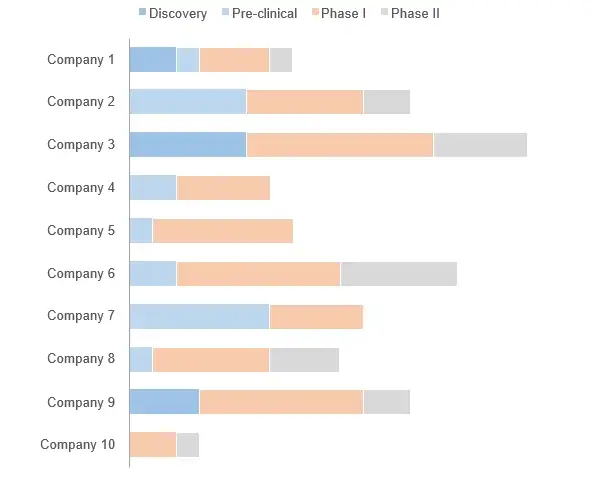
COMPANY PROFILE :
Stakeholders developing treatment solutions for Low Grade Serous Ovarian Cancer are captured, featuring information on financials, product portfolio, and recent developments.
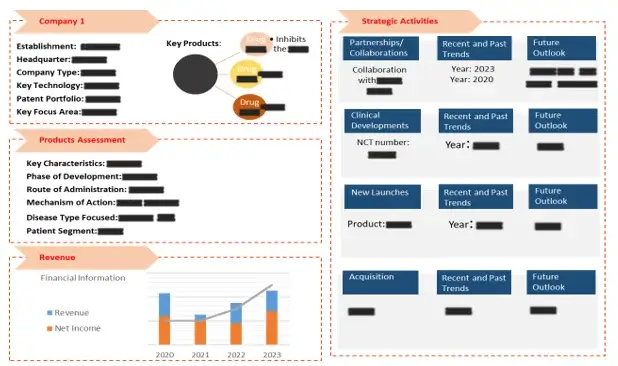
PATENT ANALYSIS:
Patent analysis provides invaluable insights into the innovative developments and emerging technologies in the field of Low Grade Serous Ovarian Cancer, allowing for a deeper understanding of novel treatment approaches.
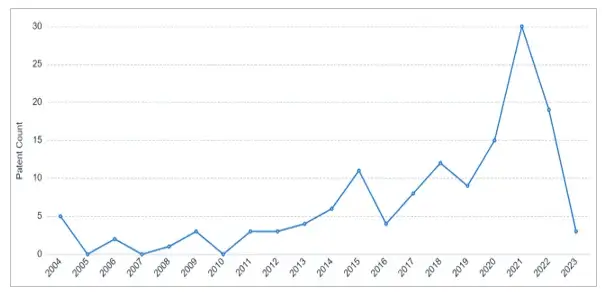
A number of drugs / therapies have been or are being evaluating in the clinical trials registered across different geographies have advanced to matured phases of development in the last five years
Low Grade Serous Ovarian Cancer: Clinical Trial Analysis
Example Illustration 1: Distribution by Key Geographical Areas
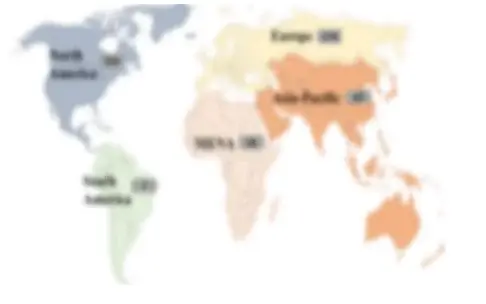
Example illustration 2: Distribution of Clinical Trials by Status:
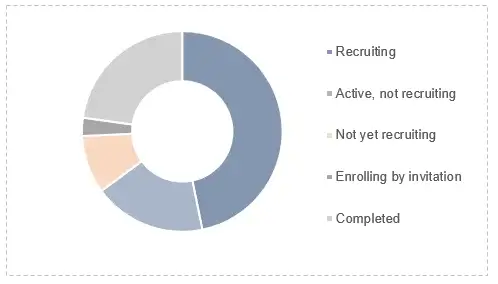
Example illustration 3: Distribution of Clinical Trials by Phase of Development:
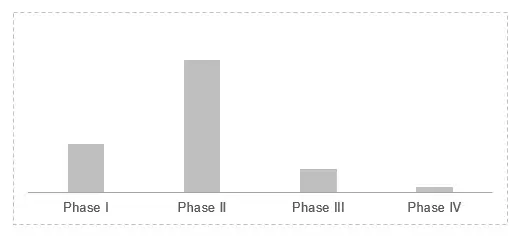
Owing to the fact that multiple drug candidates are approved and encouraging clinical results, the market is distributed across different segments and expected to witness significant growth during the next decade

Owing to the fact that there are multiple companies working in the area of Low Grade Serous Ovarian Cancer there can be potential competitors in the market that are trying to overpower.
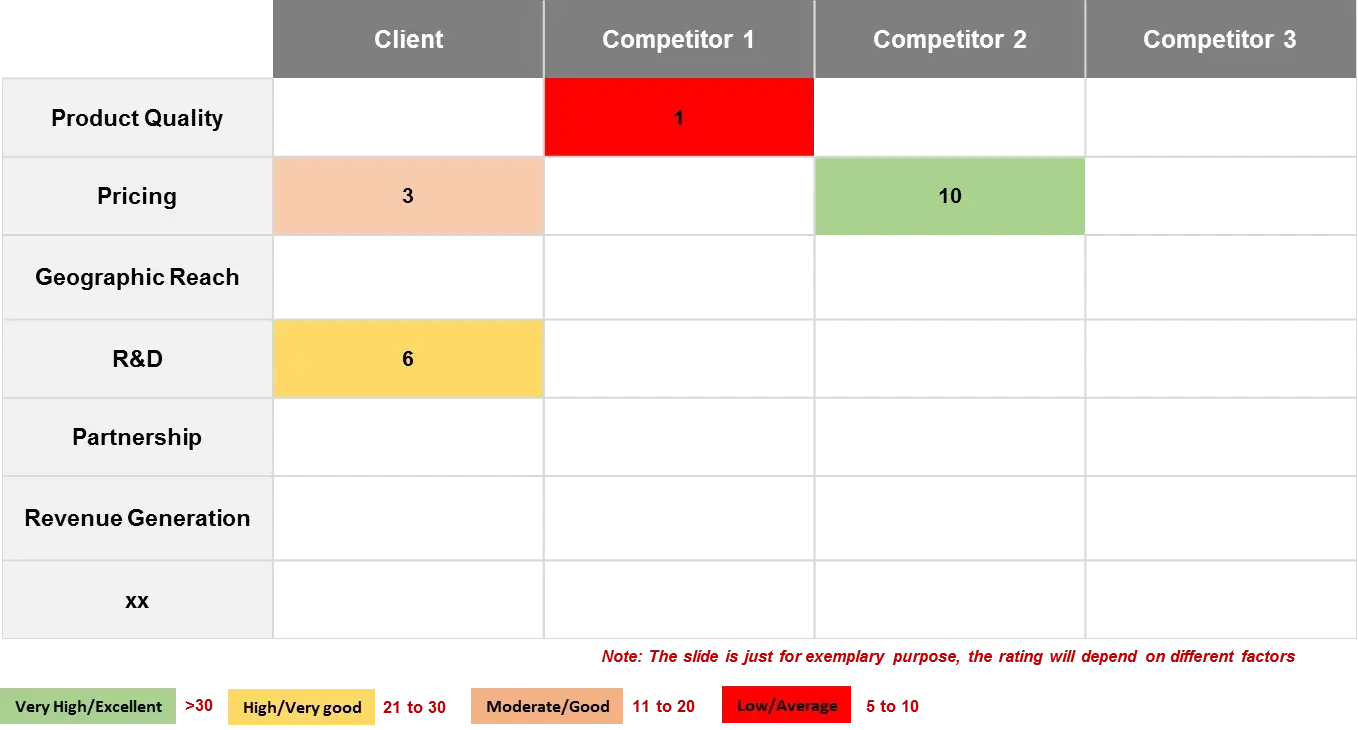
REPORT HIGHLIGHTS:
REPORT INSIGHTS:
In order to give the most precise estimations and forecasts, Wissen Research uses an extensive and iterative research approach that is focused on reducing deviation. The company blends top-down and bottom-up methodologies for market segmentation and quantitative estimation. In addition, data triangulation, which examines the market from three separate angles, is a recurrent topic present in all of our research studies. Important components of the approach used for all of our studies include the following:
Preliminary data mining
On a wide scale, unprocessed market data is collected. Continuous data filtering makes sure that only verified and authenticated sources are taken into account. Additionally, data is extracted from a wide range of reports in our repository and from a number of reputable premium databases. We gather information from raw material suppliers, distributors, and purchasers to help with this since understanding the entire value chain is crucial for a thorough understanding of the market.
Surveys, technical symposia, and trade magazines are used to gather information on technical concerns and trends. Technical information focusing on white space and freedom of movement is also obtained from an intellectual property standpoint. Additionally, information on the industry’s drivers, constraints, and pricing patterns is obtained. As a result, a variety of original data are included in the material that is then cross-validated and certified with published sources.
Statistical model
We use simulation models to generate our market projections and estimates. Every study receives a special model that is tailored to it. Data for market dynamics, the technology environment, application development, and pricing patterns are gathered and supplied into the model all at once for analysis. The relative relevance of these factors is investigated, and their impact on the forecast period is assessed, using correlation, regression, and time series analysis. The process of market forecasting combines technological analysis with economic strategies, practical business acumen, and subject expertise.
Econometric models are frequently used for short-term forecasting, but technology market models are typically employed for long-term forecasting. These are based on a confluence of the business environment, regulatory environment, economic projection, and technical landscape. In order to develop global estimates, it is preferable to estimate markets from the bottom up by integrating data from key regional markets. This is required to ensure accuracy and a complete comprehension of the subject. Among the variables taken into account for forecasting are:
Regulations and anticipated developments
We give these criteria weights and use weighted average analysis to assess their market influence in order to calculate the anticipated market growth rate.
Data Collection Matrix:
Primary research | Secondary research |
· Manufacturers · Technology distributors and wholesalers · End-user surveys · Consumer surveys | · Company reports and publications · Government publications · Independent investigations · Economic and demographic data · Online searches · Literature studies · Research reviews · Case studies · Reference customers |
1.1 Overview of Low Grade Serous Ovarian Cancer (LGSOC)
1.2 Epidemiology and Incidence Rates
1.3 Symptoms and Diagnosis
1.4 Pathophysiology
1.5 Causes and Risk Factors
1.6 Treatment
2.1 Histological Features and Pathology
2.2 Clinical Presentation and Diagnostic Methods
2.3 Staging and Prognostic Factors
3.1 Surgery in LGSOC Management
3.2 Chemotherapy Options and Regimens
3.3 Targeted Therapies in LGSOC Treatment
4.1 Global Ovarian Cancer Market Overview
4.2 Market Trends in Low Grade Serous Ovarian Cancer
4.3 Market Drivers and Challenges
5.1 Ongoing Clinical Trials and Research Studies
5.2 Promising Therapies in Development
5.3 Patient Recruitment and Trial Progress
5.4 Drugs by Phase
5.5 Drugs by Route of Administration
5.6 Key Regulatory Events
6.1 FDA-Approved Drugs for LGSOC
6.2 Emerging Therapeutic Products
6.3 Treatment Modalities and Delivery Systems
7.1 Key Patents in Low Grade Serous Ovarian Cancer Therapeutics
7.2 Patent Landscape and Intellectual Property Trends
8.1 Leading Companies in LGSOC Therapeutics
8.2 Company Profiles and Product Portfolios
8.3 Market Share Analysis
8.4 SWOT Analysis
8.5 Low Grade Serous Ovarian Carcinoma – Unmet Needs
9.1 Projected Growth of LGSOC Market
9.2 Market Opportunities and Potential Regions
9.3 Predictions for Market Evolution
10.1 United States Market Size
10.1.1 Total Market Size of Low-Grade Serous Ovarian Carcinoma in the United States (2023-2033)
10.1.2 Market Size of Low-Grade Serous Ovarian Carcinoma by Therapies in the United States (2023-2033)
10.2 Germany Market Size
10.2.1 Total Market Size of Low-Grade Serous Ovarian Carcinoma in Germany (2023-2033)
10.2.2 Market Size of Low-Grade Serous Ovarian Carcinoma by Therapies in Germany (2023-2033)
10.3 France Market Size
10.3.1 Total Market Size of Low-Grade Serous Ovarian Carcinoma in France (2023-2033)
10.3.2 Market Size of Low-Grade Serous Ovarian Carcinoma by Therapies in France (2023-2033)
10.4 Italy Market Size
10.4.1 Total Market Size of Low-Grade Serous Ovarian Carcinoma in Italy (2023-2033)
10.4.2 Market Size of Low-Grade Serous Ovarian Carcinoma by Therapies in Italy (2023-2033)
10.5 Spain Market Size
10.5.1 Total Market Size of Low-Grade Serous Ovarian Carcinoma in Spain (2023-2033)
10.5.2 Market Size of Low-Grade Serous Ovarian Carcinoma by Therapies in Spain (2023-2033)
10.6 United Kingdom Market Size
10.6.1 Total Market Size of Low-Grade Serous Ovarian Carcinoma in the United Kingdom (2023-2033)
10.6.2 Market Size of Low-Grade Serous Ovarian Carcinoma by Therapies in the United Kingdom (2023-2033)
10.7 Japan
10.7.1 Total Market Size of Low-Grade Serous Ovarian Carcinoma in Japan (2023-2033)
10.7.2 Market Size of Low-Grade Serous Ovarian Carcinoma by Therapies in Japan (2023-2033)
11.1 Emerging Technologies in LGSOC Research
11.2 Personalized Medicine and Biomarker Development
11.3 Potential Impact of Immunotherapies
S.no | Key Highlights of Report | |
1. | Patent Analysis | · Top Assignee · Geography focus of top Assignees · Assignee Segmentation · Network analysis of the top collaborating entities in LGSOC treatments patent applications · Technology Evolution · Key Patents · Application and Issued Trend · Key technology |
2. | Market analysis | · Current Treatment Options · Emerging Therapies and Research Developments (by product analysis and scientific analysis) · Strategic activities · Therapeutic activity of drugs · Company portfolio |
3. | Clinical Trials | · Analysis of clinical trial through graphical representation · Coverage of treatments from pre-clinical phases till commercialization (also including terminated and completed studies) |
4. | Forecast | · Detailed comprehension of the historic, current and forecasted trend of market by analysis of impact of these treatments on the market |
5. | Key Players | · Detailed profiles of the key players that are engaged in the development of approved drugs |
6. | Strategic activities of companies | · Collaboration/Mergers/Agreements/Partnerships/Acquisitions taken place by analyzed companies |
7. | Opportunity Analysis | · Technology evolution based on problem solution · Potential licensees · Geography of suppliers · Treatment trends · SWOT |
8. | KOLs | · A detailed analysis and identification of the key opinion leaders (KOLs), shortlisted based on their contributions |
9. | Drivers and Barrier | · Unmet needs · Drivers and barriers · Opportunity for new treatments |
LIST OF FIGURES
Figure number | Description |
Figure 1 | Terminology of Low Grade Serous Ovarian Cancer Over The Years |
Figure 2 | Low Grade Serous Ovarian Cancer Treatment– History and Present |
Figure 3 | Projection of Low Grade Serous Ovarian Cancer till 2033 in different geographies |
Figure 4 | Technology Categorization Of Drug Delivery Methods For Low Grade Serous Ovarian Cancer |
Figure 5 | Recent Technology Trends in Low Grade Serous Ovarian Cancer |
Figure 6 | Technology Evolution in Drug Delivery Market of Low Grade Serous Ovarian Cancer |
Figure 7 | Geographical Distribution of Patents of Top Assignees |
Figure 8 | Assignee Segmentation (Companies) |
Figure 9 | Assignee Segmentation (Educational Establishment) |
Figure 10 | Patent Based Key Insights Of xx |
Figure 11 | Patent Based Key insights of xx |
Figure 12 | Patent Based Key insights of xx |
Figure 13 | Geographic Distribution of the Universities/Research Organizations Filling Patents On Various Drug Delivery Approaches |
Figure 14 | Key Summary Regarding the Patent Filing On Low Grade Serous Ovarian Cancer |
Figure 15 | Product Pipeline of Different Approaches with Companies Name |
Figure 16 | Portfolio for Approved Product |
Figure 17 | Clinical Trials Conducted till Date by Different Companies and Universities |
Figure 18 | Clinical Trials based Key Insights |
Figure 19 | Key Growth Drivers for Low Grade Serous Ovarian Cancer Market |
Figure 20 | Restraints for Low Grade Serous Ovarian Cancer Market |
Figure 21 | xx Portfolio (Top Player) |
Figure 22 | xx Portfolio (Top Player) |
Figure 23 | xx Portfolio (Top Player) |
Figure 24 | xx Portfolio (Top Player) |
Figure 25 | xx Portfolio (Top Player) |
Figure 26 | xx Portfolio (Start-up) |
Figure 27 | xx Portfolio (Start-up) |
Figure 28 | xx Portfolio (Start-up) |
Figure 29 | Strategic Activities Including Collaboration, Partnerships and Acquisitions |
Figure 30 | Research Methodology for Patent, Selection and Analysis |
Figure 31 | Research Methodology for Clinical Trials, Selection and Analysis |
LIST OF GRAPHS
Graph number |
Description |
Graph 1 | Number of people worldwide with Low Grade Serous Ovarian Cancer |
Graph 2 | Problem Solution Analysis |
Graph 3 | Top Assignees in Low Grade Serous Ovarian Cancer |
Graph 4 | Technology Focus of Top Assignees (IPC-CPC Classes) |
Graph 5 | Top Countries of Origin of Patents |
Graph 6 | New entrants in drug delivery field |
Graph 7 | Legal Status |
Graph 8 | Most Cited Patents |
Graph 9 | Patents with Largest Invention Families |
Graph 10 | Most Claim-Heavy Patents |
Graph 11 | Filing Trends |
Graph 12 | Clinical Trial Filing Timeline |
Graph 13 | Recruitment Status of the Clinical Trials Related to the Different Drug Delivery Approaches |
Graph 14 | Clinical Trials Phases with Respect to Specific Drug Delivery Approach |
Graph 15 | Weighted Scores for Top 64 Players According to Benchmarking Criteria |
Graph 16 | Low Grade Serous Ovarian Cancer (CAGR: 2023-2033) |
Graph 17 | Low Grade Serous Ovarian Cancer Market Share: Distribution by Key Geographical Area, 2023-2033 |
LIST OF TABLES
Table number | Description |
Table 1 | Parameters included and excluded for conducting the analysis |
Table 2 | Technology Classes with Definitions |
Table 3 | Patent Litigation |
Table 4 | Highest Market Valued Patents |
Table 5 | SWOT Analysis of Top 3 Players |
Table 6 | Parameters and their score for Benchmarking |
Table 7 | Weighted scores for top 5 players according to benchmarking criteria |
Please Subscribe our news letter and get update.
© Copyright 2024 – Wissen Research All Rights Reserved.